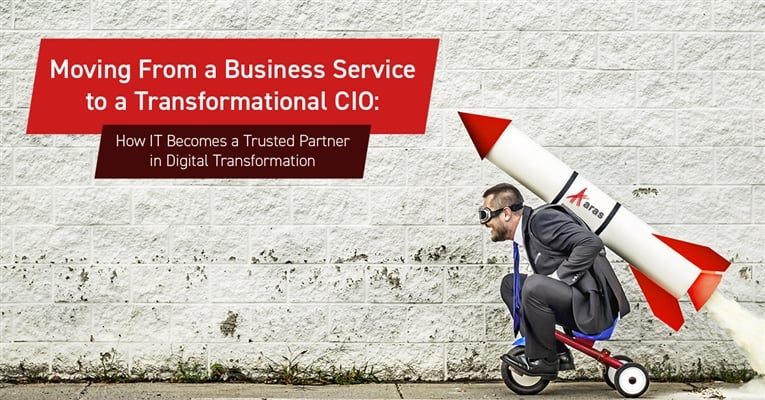A lot has been said about the need to digitally transform and I think, in general, we all agree it’s a great idea. There is plenty of evidence that those companies that can deliver their IT prowess to their customers are more apt to be leaders in their industry. One of my favorite stats is from an IDC "Manufacturing Insights Survey" in 2020. It proves that if you are digital, you are more profitable and have higher revenues than your non-digital peers and that the gap is widening every year!
It’s hard to get away from day-to-day concerns to look at the big picture. But, in reality, what you are doing in the trenches is key to delivering digital transformation projects. You have to have a direct connection to your customer, the business, to gain an understanding of their needs. If you are one of the good ones, you have gained credibility to prove your mettle by delivering smaller projects that increase productivity. This is your advantage that you can use as a gateway to becoming a Transformational CIO.
Transformational CIOs are peers to the business side of their organization and know what it takes to drive the business forward. Focused on the future vision and technical excellence, this type of CIO wants to deliver on big-impact projects, but are bogged down by legacy systems.
To be honest, as a Business Service CIO you are bogged down by legacy systems too, but you can work around some of these issues through smaller projects (albeit at a higher operational cost) to create incremental value. When you make the move to becoming a Transformational CIO, you are now able to make the big changes in technology to keep up with the pace of business changes. So, what needs to be considered for IT to become that trusted partner in Digital Transformation?
Customized OOTB Software Needs to be EASILY Upgradeable
Let’s face it, your current solution is not upgradeable and is getting in the way of you becoming a Transformational CIO. If recent research is any indication, according to CIMdata, average Dassault, PTC, and Siemens solutions are 8-12 years behind the times—that is the last time they have been upgraded. What is holding IT change back? In all likelihood, it starts with the cost of upgrades that can take a year and excess of $1M. What’s holding YOU back?
What’s worse, is if you make the fateful decision to upgrade anyway, taking the hit of money and time, by the time you have finished, you are a year behind any of the NEW business requirements that your business needs, you’re back to square one, and the trust with the business is lost.
Applications, UI, and Workflows NEED to be Evolvable
Speed with value. Is this possible? The business can be a fickle beast with their constant cycle of new requests and changes to existing projects. This would be fine if the requirements remained static. But the world is in constant change, and business strategies are refined and updated—constantly. So how can IT keep up?
The key is moving your mindset away from “OOTB is the answer.” In reality, there is no such thing as OOTB. Undoubtedly, you’ve tried that before with previous PLM implementations, which were customized, then made resistant and expensive to change. What’s required is low-code characteristics with industrial software at its core. Resilience is the answer to enabling low cost customizations and quick iterations between the business and IT, to get to what the business wants faster and to respond overnight to change when needed. This is Digital Transformation.
Software MUST Enable Incorporation or Connection to Legacy Tools
You can get out of technical debt and build a sustainable digital thread at the same time. There is no better way to be viewed as transformational than by killing two birds with one stone. If you are successful in delivering value to the business with better applications, that are easy to use, and able to be changed at a moment’s notice, the business will keep coming back for more. In our experience this is where Digital Transformation happens, the business begins asking about replacing existing tools, “Can this be built in Aras?” Become a builder, and the answer is yes—leading to reduced IT costs, building a collaborative business environment, accelerating productivity across the lifecycle.
Take the First Step
The business is asking for ways to better collaborate across the lifecycle. This isn’t solved by connecting just one department to another, it requires extensive enterprise ecosystem connections, new applications, and flexible workflows to change when the business needs to, without being constrained by IT. For CIOs, Directors, and Managers this creates an opportunity to move from service oriented to “Transformational” and elevates the function of IT to be in the driver’s seat for digital transformation initiatives. Take the first step by moving on from legacy decisions that are keeping you from being bold, and change to something new and better.

